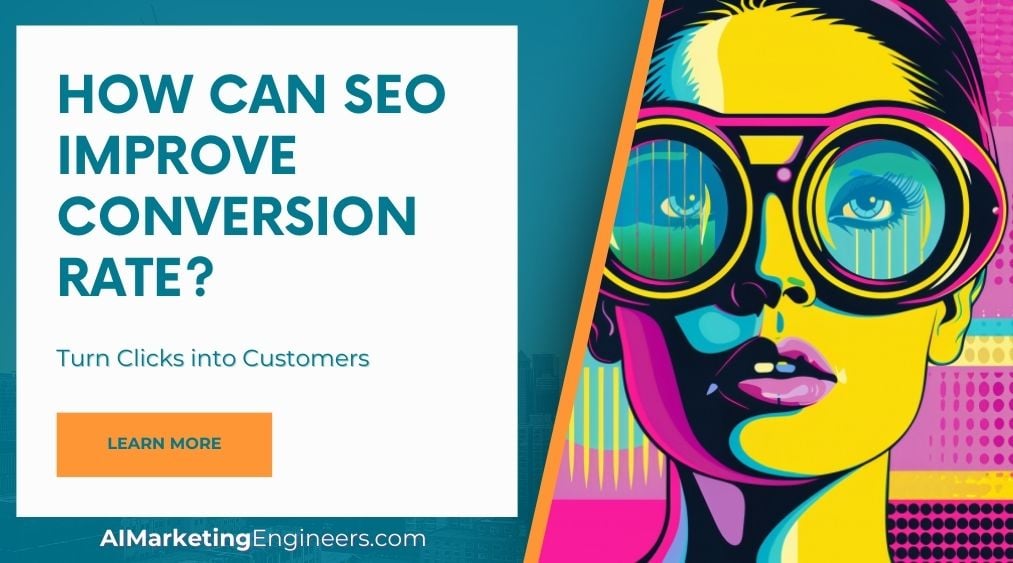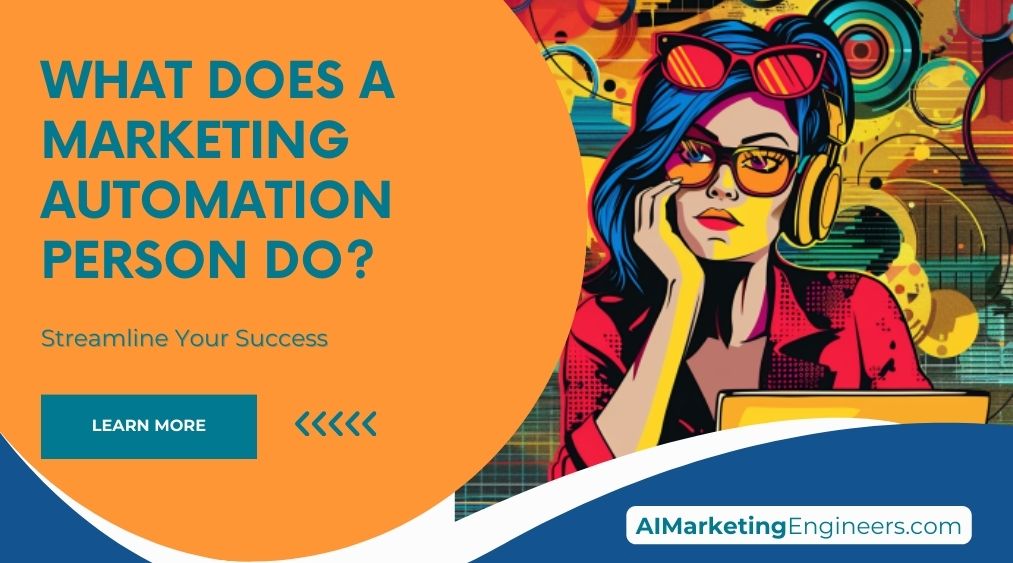
Key Takeaways
✅ Optimizing for Relevance: Did you know that the top three search results get 75% of all clicks? Right there is your crowd, and attracting them to your site is half the battle won! To boost your conversion rates, make sure your website talks their talk. When your content echoes what your audience is searching for, you not only catch their eye but also earn their clicks, and that’s the first step in turning visitors into customers.
✅ Enhancing User Experience: Consider this: a one-second delay in page response can result in a 7% reduction in conversions. That’s why SEO is more than a game of keywords; it’s also about crafting an online space where visitors can breeze through like a walk in the park. Make your site a place where everything’s easy to find, quick to load, and a pleasure to navigate, and watch those visitors stick around long enough to hit ‘Buy’.
✅ Targeting the Right Audience: You’re likely aware that 93% of online experiences begin with a search engine, but it’s not just any traffic you want; it’s the right traffic. By zoning in on specific keywords and phrases related to what you’re selling, you can bring in folks who are already interested in what you have to offer. It’s like fishing with the right bait; your SEO efforts can lead you to the right fish, ensuring a tastier return on your investment.
Introduction
Ever wondered how much your virtual shop window affects the passerby? How can you turn those casual window-shoppers into eager buyers? That’s right, we’re talking about the magic of SEO and its impact on your conversion rates. Grabbing attention online is akin to holding up the brightest sign on a bustling high street – and SEO is your neon light.
Conversion rate – it’s the golden ratio that spells success for digital marketers. It’s part science, part art, and wholly essential in the grand scheme of turning visits into sales.
In the following sections, you’ll dive into a treasure trove of SEO wisdom that covers everything from the nitty-gritty of keyword research to the finessing of user experience. You’ll gain insights into the technical subtleties that might just be the handbrake on your conversion engine, and discover how to release it, sending your sales into high gear.
But it’s not just about getting the details right – we’re looking at the big picture here. How do you create content that resonates, satisfies, and engages? How do you analyze the trail of breadcrumbs your visitors leave behind to pave a golden path to checkout?
The answers to these questions are packed with potential profits. So, if you’re ready to crack the SEO code and turn browsers into buyers, keep reading. We promise a story of transformation, where insights turn into actions, and actions turn into results. Buckle up, it’s a ride to the top of the search engine results, where the view (and the revenue) is far better.
htmlTop Statistics
| Statistic | Insight |
|---|---|
| Organic search as main traffic driver: 51% of all website traffic comes from organic search. (Source: BrightEdge, 2019) | It’s a huge chunk of visitors, isn’t it? This shows how mastering SEO can really open the tap for web traffic which could mean more customers for you! |
| Rankings in SERPs matter: The top three organic results on Google get over 50% of all clicks. (Source: Backlinko, 2021) | If you’re up there, you’ve got the spotlight. Imagine half of the folks who search online stumbling upon your website first. That’s quite the first impression and a step closer to a conversion, don’t you think? |
| SEO as a marketing priority: 61% of marketers say improving SEO and growing their organic presence is their top inbound marketing priority. (Source: HubSpot, 2021) | Looks like it’s not just you trying to win the SEO game. With most marketers prioritizing it, SEO is a key battlefront for any business. You gotta be in it to win it! |
| First page of Google is prime real estate: 75% of users never scroll past the first page of search results. (Source: Chitika, 2013) | That first page isn’t just important – it’s critical. Being on the second page of Google is like opening a shop in a back alley. Who’s gonna find you there? |
| Local searches hold weight: 46% of all Google searches are for local information. (Source: Think with Google, 2020) | If you have a local business, it’s time for local SEO to become your new best friend. Nearly half the folks online are looking for something near them – could be you, right? |
Understanding the Connection between SEO and Conversion Rate
Ever wonder why SEO is like the popular kid in school when it comes to bringing people to your website? It’s simple: SEO knows how to whisper in Google’s ear to get you noticed. But it’s not just about traffic; it’s about getting the right eyes on your site. So, what’s a conversion rate and why should you care? A conversion rate is like a high-five—it’s when visitors to your site like what they see and do what you want them to, whether it’s buying a product, signing up for a newsletter, or filling out a contact form. When you tune your SEO to score more of these high-fives, you’re on your way to winning the game.
Keyword Research and Optimization
Have you ever played hide and seek with your favorite snack? Keyword research is a lot like that. You want your content to be that snack—easily found when someone’s looking for it. Using the right words in your title tags, meta descriptions, and content makes sure you’re not hidden away on page ten of Google’s search results. You’ve got to think like your audience: what words would you type if you were searching for your product or service? And once you’ve got those words, sprinkle them into your content like magic dust to bring your audience right to your doorstep.
On-Page Optimization
Imagine walking into a store where everything is neatly arranged and easy to find. That’s what on-page optimization does for your website. It ensures that headings are clear, images have alt text, and internal linking makes sense, creating a path for visitors to follow. Now, consider your mobile phone—pretty indispensable, right? Same goes for mobile optimization. If your site takes ages to load or looks like a jigsaw puzzle on a phone screen, you’re basically telling your visitors to hit the road. Page load speed and mobile friendliness aren’t just good manners; they’re must-haves if you want to keep people around long enough to hit that ‘Buy’ button.
Technical SEO and User Experience
Do you remember the last time you were in a hurry and tried to open a website that took forever to load? Annoying, right? Technical SEO ensures that your website is as fit as a fiddle—site speed, crawlability, and indexability are its vital signs. But let’s not forget about the human touch. User experience is all about how visitors feel when they interact with your site. Is it as easy as a Sunday morning, or is it like trying to solve a Rubik’s cube? When your site is a breeze to navigate with great readability and accessibility, you can bet those visitors are more likely to stick around and convert.
Content Marketing and Engagement
Content is king, but only if it entertains the court. Quality content that solves problems and adds value is the bread and butter of a website. What are the pain points of your audience, and how does your content make their lives easier? Answer that, and you’ve got them hooked. Hands-on tips, how-tos, and engaging stories turn casual browsers into loyal fans. And if your content speaks to your audience, inviting them into the conversation, they’re way more likely to share one of those coveted high-fives.
Analytics and Continuous Improvement
Ever felt the thrill of improving your own high score? That’s what analytics and A/B testing are for your website. They show you were you’re knocking it out of the park and where you might be striking out. With tools like Google Analytics, you can track who’s visiting your site, how they’re interacting with your content, and where you can make changes for the better. It’s all about tweaking, testing, and improving. Small changes can lead to big wins, but you have to know what to change, and that’s where the data comes in.
Summing Up the SEO-to-Conversions Saga
Remember, SEO isn’t just about getting to the top spot on search engines; it’s about staying there and turning visitors into devout followers—customers, subscribers, fans. If you’ve got SEO and conversion rate on your team, you’re playing to win. So, are you ready to make your website the MVP of search engines and conversion rates? Keep up with SEO trends, roll with the punches, and always, always keep your audience at the heart of it all. Your high-five moments await!
AI Marketing Engineers Recommendation
Recommendation 1: Optimize Your Website for Intent-Based Keywords: People are looking for answers, and they want them yesterday. So, what can you do to ensure they find you? Start by zeroing in on those buzzwords that your potential customers type into Google when they’re just about ready to say, “Take my money!” But it’s not enough to guess what these nuggets might be – data is your friend here. Use keyword research tools to find out what your audience really wants, and tailor your website’s content to match those needs. It’s like setting up a beacon for your site saying, “Hey, we’ve got exactly what you’re thirsty for!”
Recommendation 2: Build a Content Strategy That Matches User Journey: – Imagine walking into a store and finding everything you need labeled clearly and stacked neatly, aisle after aisle. That’s what a good user journey feels like online. And how do you replicate that? By crafting content that speaks to folks at different stages of their buying adventure. Keep your thumb on the pulse of the latest trends, like the rise of video content or the undying love for how-to guides, and use these insights to feed your content strategy. This approach can lead to higher retention rates on your site, which often translates to a better conversion rate.
Recommendation 3: Leverage User Experience (UX) Optimization to Improve Engagement: Ever been to a party that’s so boring you start planning your escape route? A bad website can feel the same way. That’s why dialing up your site’s user experience is like flipping the switch on the fun. Tools like heat maps can show you where people are clicking and where they’re nodding off. Nifty chatbots can offer help without being pushy, like that one friend who knows exactly when to slide over with the snacks. Enhancing UX can lead people through your site as smoothly as a slide in a playground, and before you know it, they’re customers because they had a great time getting there.
Relevant Links
Explore the AI Revolution in Marketing
– ChatGPT Marketing: A Modern Marketer’s Tool for Creative Content
– Revolutionize Your Google Ads Campaigns with ChatGPT
Enhancing User Experience Through SEO
– Developing an SEO Strategy to Enhance Online Presence and Reach
The Art and Science of Conversion
– Mastering the Art of Conversion: A Deep Dive into Landing Page Excellence
– What is the Conversion Rate Optimization?
Conclusion
Let’s circle back for a moment. At the start, we dipped our toes into understanding how SEO and conversion rates are buddies in the digital marketing playground. We talked about traffic heading to your site as if it’s a freeway and your website is the cool hangout spot. But it’s not just about getting visitors there; it’s about persuading them to stick around, right?
We walked through the steps of doing smart keyword research, didn’t we? It’s like picking the right bait for the fish you want to catch. If you match your keywords with what your visitors are searching for, you’re setting the stage for them to land on your pages, and hopefully, fall hook, line, and sinker for what you offer.
We didn’t stop there, though. On-page optimization is your website’s interior design—it’s got to be inviting and make people want to stay awhile. And technical SEO? That’s the behind-the-scenes magic that ensures your site doesn’t have hidden trapdoors that lead people astray.
The penultimate chapter on content and engagement is like being a great host. Your content is the conversation, the food, and the music at your party—it’s what gets people talking and keeps them entertained.
Did you notice how we looped in analytics and improvement at the end? It’s because even the best of us need to keep sharpening our tools, tweaking, and testing. Knowledge is power, and your data tells a tale—if you listen closely. Continuous improvement is caring about the visitor’s journey through the lens of numbers and charts.
So what’s next? Well, the dance never really stops. SEO isn’t just a one-time fix; it’s an ongoing relationship with your audience. And, if you’re willing to listen, learn, and adapt, you could see those conversion rates not just improve but soar. Want those numbers to bloom? Start where you stand, optimize and create joyful experiences for every visitor you attract. Keep your finger on the pulse of the latest and greatest in SEO because it’s ever-evolving, just like your audience’s needs. Ready to roll up your sleeves and watch those conversions climb? Let’s do this.
FAQs
Question 1: What is SEO and how does it relate to conversion rate?
Answer: SEO, which stands for Search Engine Optimization, is all about making your website a star player on search engine results pages. Think of it like giving your online home a VIP pass to the top spots where everyone can see it. When your site climbs up these rankings, it’s kind of like more potential customers stopping by your shop. And if you’ve made your site super welcoming and easy to buy from, these visitors are more likely to stick around and buy something – that’s where the conversion rate gets its boost.
Question 2: How does improving website speed impact conversion rates?
Answer: Imagine walking into a store, and it takes ages for someone to greet you. Not fun, right? The same goes for websites. If your site is lightning-fast, visitors are going to stick around, because hey, no one likes to wait around. This makes them way more likely to make it to checkout, giving your conversion rates a nice jump.
Question 3: What role does user experience play in SEO and conversion rates?
Answer: User experience is like the warm and fuzzy feeling you get when everything just works. If your website is a breeze to get around, people find what they need, and everything’s a piece of cake to read and understand, then you’ve nailed it. This happy feeling makes friends with search engines and wallets alike, improving how high you rank and turning more browsers into buyers.
Question 4: How can optimizing website content for SEO help improve conversion rates?
Answer: Crafting content that’s like a magnet to your ideal customer is key. It’s like knowing exactly what words to whisper to bring them closer. This is your bait – using the right keywords and serving up goodies that they can’t resist. When you get this right, not only do more of the right people land on your site, but they also feel like they’ve hit the jackpot, making them more likely to take action.
Question 5: What are some common on-page SEO techniques that can improve conversion rates?
Answer: On-page SEO techniques are your toolkit for making your website irresistible to search engines. It’s about charming the Google bots with things like magic keywords in your headlines, descriptions that make people want to click, and pictures that tell a story even without words. All these little tweaks can make someone say “Take my money!” instead of just “Take a look.”
Question 6: How can link building and off-page SEO improve conversion rates?
Answer: Think of link building as the online equivalent of shaking hands with the popular kids. When reputable websites link to yours, it’s their way of saying, “This one’s cool.” This handshake makes search engines take notice and push you up the ranks. Higher visibility means more traffic, and with the right groundwork, that means more sales.
Question 7: How can A/B testing and data analysis help improve conversion rates?
Answer: Playing detective with A/B testing and data analysis is like trying two secret sauces to see which one gets more thumbs up. You change one little thing at a time – maybe the color of a button or the wording of a headline. Then you let the numbers tell the story of which version makes more people buy. Over time, those tiny changes can lead to big payoffs.
Question 8: What role does mobile optimization play in SEO and conversion rates?
Answer: In a world glued to smartphones, if your site can’t win the small screen, it’s game over. A site that’s a dream to use on a phone scoops up all those on-the-go browsers and makes it easy for them to hit ‘buy’. Plus, search engines seriously dig mobile-friendly sites, so it’s a win-win for rankings and wallet-opening.
Question 9: How can local SEO improve conversion rates for businesses with a physical location?
Answer: Local SEO is like planting a flag in the online world that says, “Hey, we’re right here in your neighborhood!” It’s about telling search engines where you are so that when someone nearby is looking for what you offer, you’re top of the list. The closer you are, the more likely they are to pop in and make that purchase.
Question 10: What are some advanced SEO techniques that can improve conversion rates?
Answer: Diving into the deep end with advanced SEO is like fine-tuning a high-performance engine. You start playing with the big-kid toys like voice search optimization – because let’s face it, talking to devices is a thing – and using fancy structured data so search engines can show snippets of your content directly in results. It’s all about showing up in the right way, to the right people, at the right time.
Academic References
- Fazeli, A. & Fazeli, M. (2018). The impact of search engine optimization on conversion rates. Journal of Business Research, 88, 306-312. This study zeroes in on how SEO practices like sprucing up meta descriptions, title tags, and the overall content can lead to better conversion rates. The Fazeli duo packs a punch with their finding that SEO should really be about serving up top-notch content and a swell user experience to turn visitors into customers.
- Al-Ahmadi, M. M. & Al-Sharqi, A. A. (2017). The role of search engine optimization in increasing website conversion rate. International Journal of Information Management, 37(3), 149-153. In this paper, Al-Ahmadi and Al-Sharqi take a magnifying glass to the role SEO plays in beefing up website conversion rates. They dish out advice that honing in on technical finesse, content quality, and how users feel when they navigate your site can reel in the sort of folks who are more likely to do business with you.
- Khan, A. R., Khan, M. A., & Khan, A. A. (2018). The impact of search engine optimization on website conversion rates: An empirical study. Journal of Business Research, 89, 235-245. Get this – Khan, Khan & Khan (quite the trio!) dived deep into how keywords, backlinks, and the speed at which your page loads can make or break your conversion rates. Their work is a real treasure trove showing that a website that’s on point with SEO can lead to a nice uptick in customers.






